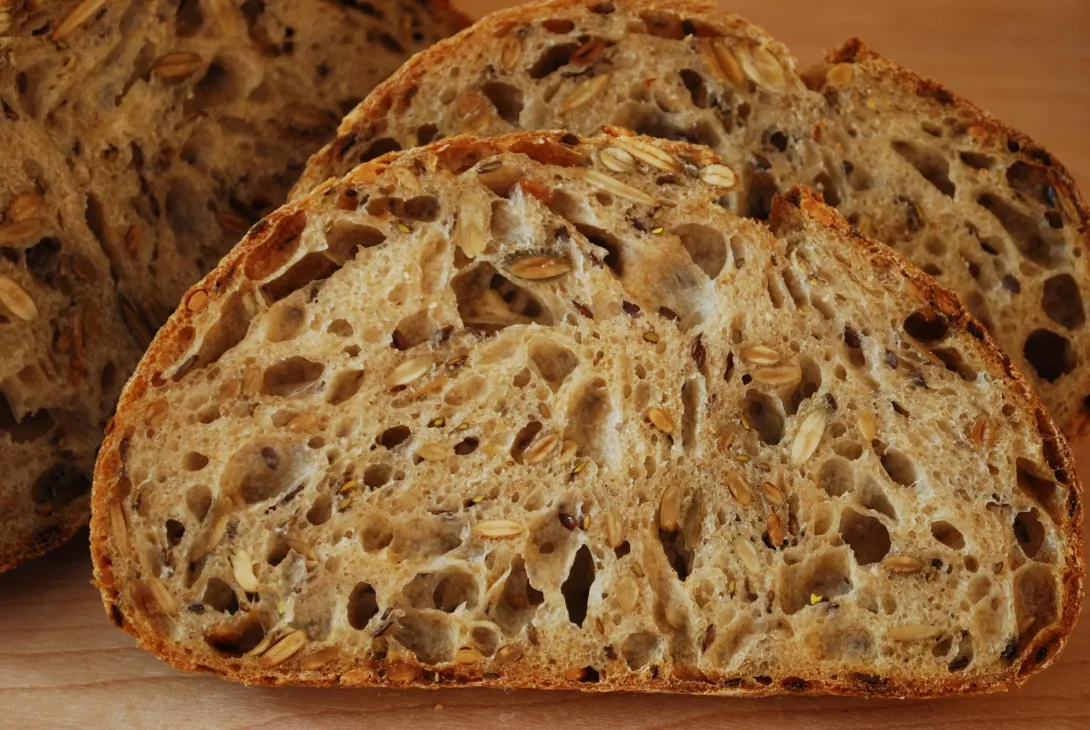Flaxseed Rye
This is my version of the flaxseed rye posted by hansjoakim a couple of weeks ago. I couldn’t resist this one. Not only would it satisfy my ongoing and inexplicable craving for flaxseeds, but it also provided an opportunity to use-up some of the old bread I’ve had frozen and waiting for just such an occasion.






